Patreon MUSICARTA - SCALES Premium
Stressed Scale Practice Patterns
~ Similar Motion ~
Rhythmic stress (emphasis) helps you learn your scales by making you want to ‘keep the notes coming’ until you get to a satisfactory ending note.
Stressed scale practice patterns also help you to see and follow patterns – and transpose them.
There are four pages in this mini-series:
- SSPPs in similar motion ('SimMo')
- SSPPs in contrary motion ('ConMo')
- SSPPs in 3rds, 6ths and 10ths (similar motion); and
- SSPPs in 3rds, 6ths and 10ths in contrary motion.
Use this mini-series nav to get around the pages.
|
Stressed Scale Practice Patterns (SSPPs) |
Patterns in twos
For example, if you stress every second note, your scales will 'come out' at two octaves. That is, they will finish in a satisfying way after two octaves in length whether straight up or down or up-and-down or down-and-up.
Here's a little 'suite' of the stressed-in-two possibilities, shown as a 'contour' diagram - animated in the video.
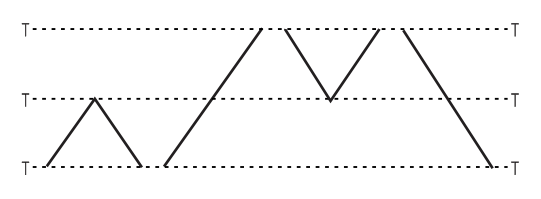
Pay attention to how the contour diagram expresses the music. It's 'music without the dots'.
Carry on with the patterns in threes or jump down to the transposing section.
Patterns in threes
If you stress every third note, your scales will 'come out' at three octaves.
Here are four possible three-octave patterns.
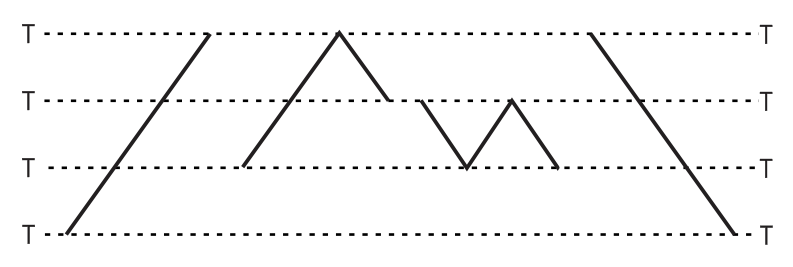
Note that, just because a pattern is 'three octaves long', it doesn't have to be three octaves 'high'.
Patterns in fours
If you accent every fourth note, your scales will naturally end after four octaves (in length).
You could play four octaves straight up or down (not shown), or up and down two octaves, as here.
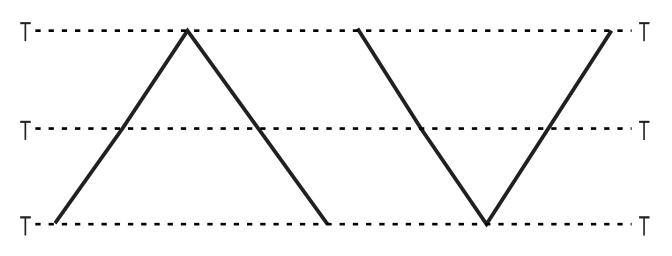
The video demonstration goes straight into these two four-octave-long patterns stressed in fours.
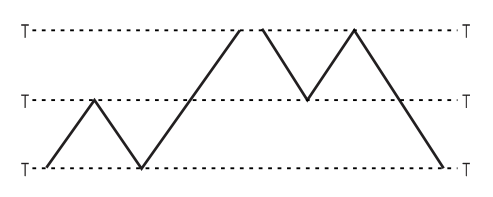
And then these:
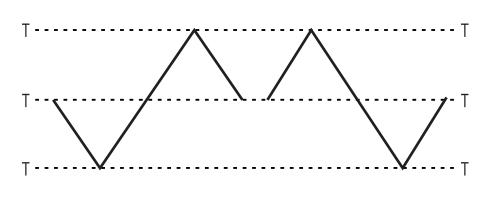
Patterns in sixes
For scales in sixes, covering a length of six octaves, we can either double any stressed-in-threes pattern, or play scales genuinely stressed in sixes.

Application: Stressed contour-diagram SPPs in C major and minors
Here's an example of how you can make stressed scale practice patterns a useful part of your daily practice routine - in this case, a run-through of C major, and the melodic and harmonic minors.
(Don't worry if you haven't learned the minors yet - it's just an example.)
Stressing scales in threes (or sixes) over a vertical span of only two octaves generates a number of possible 'contour patterns'.
First pattern
From T-for-tonic - the name-note of the scale - you can see the pattern goes straight up two octaves, down again and up again. That will 'bring it out' - the performance will end in a satisfying way on a stressed note.
The three patterns are for the major scales, then the two minors. If you finish at the top, you start the next scale at the top.

Second pattern
As an alternative, play up an octave then down again, then up two octaves, then down one octave and back up.
That makes a total length of six octaves, but a 'height' of only two octaves.
Check that you see how the diagram correctly represents this.

The diagram shows you playing through the pattern three times, starting from the bottom, the top, and the bottom again.
Note that stressing in threes but going through twice carries you satisfactorily through the six-octave length.
The video
This video shows the patterns above played in C major, C melodic minor and C harmonic minor in sequence.
When playing through the suite of three scales, you start the next scale where you finished (top or bottom).
One novel result is that you start playing the melodic minor from the top - i.e. descending. Expect to find this unusual!
Here's a snap-shot of the MS. For preference, play from an understanding of the pattern, using strong stressed groups of three notes to get you through to the final tonic.
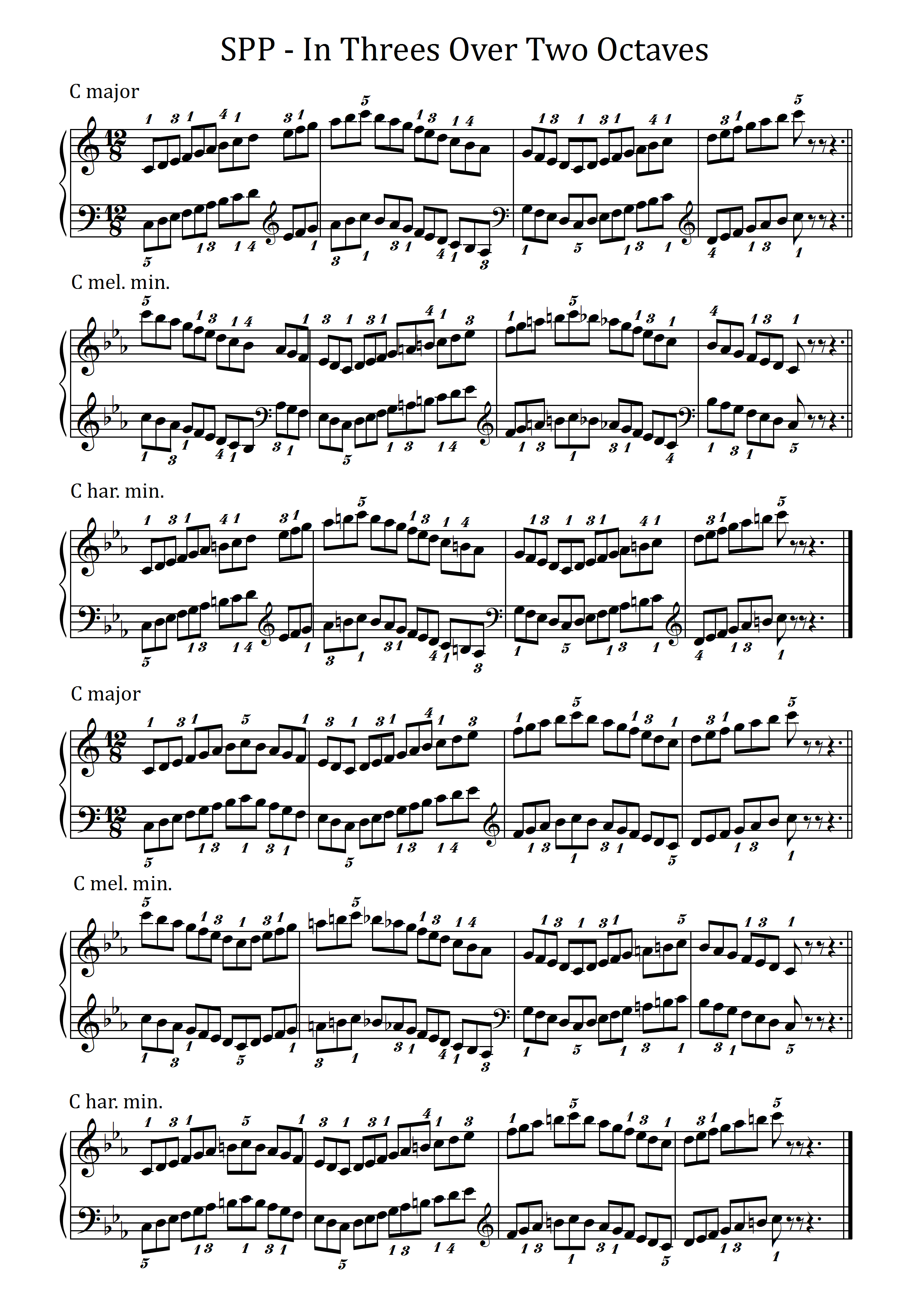
Once you have learned the two-octave scales, you can use these patterns to structure your daily scale practice. Work through the twelve keys methodically!
Transposing the patterns
Once you can play the patterns comfortably in C, you should play them in other keys.
The keys demonstrated here represent the two-handed scale fingering groups.
- 2H/SFG1: A major;
- 2H/SFG2: E flat major;
- 2H/SFG3: F or B major;
- 2H/SFG4: D flat or F sharp major.
You yourself should transpose the SSPPs into other keys in those groups.
Patterns in twos
Play the patterns in twos in A and F majors.


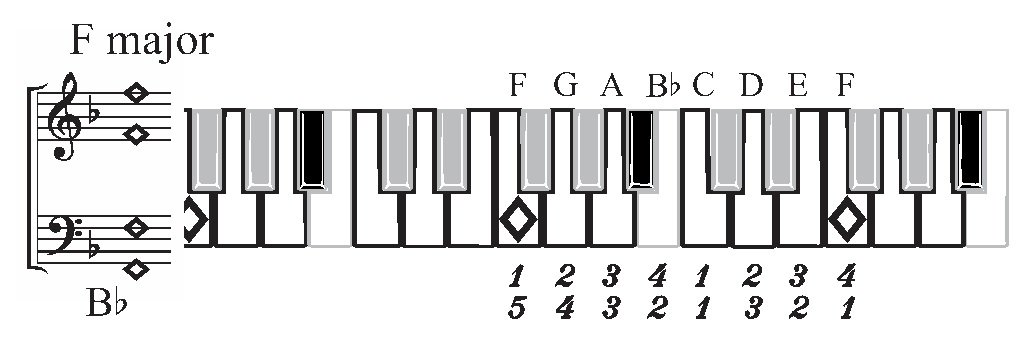
Patterns in threes
Play the patterns in threes in E flat and B majors.
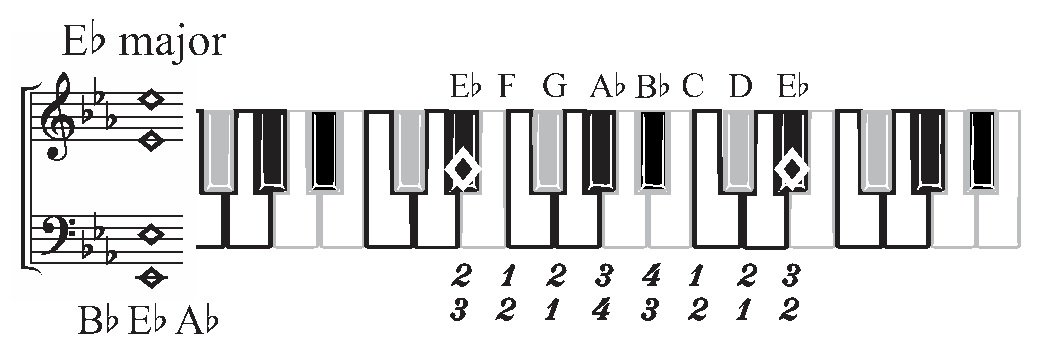


Patterns in fours
Play the patterns in fours in F and D flat majors.

Here are the contour diagrams for all the patterns in fours




Patterns in sixes
Play the pattern in sixes from the contour diagram in A and F sharp majors.



Now go on to master some stressed scale practice patterns in contrary motion or skip forward and try the SSPPs in thirds, sixths or tenths.
|
Stressed Scale Practice Patterns (SSPPs) |
Thanks for practicing with Musicarta! Come back soon!
|
Musicarta Patreon
SCALES SERIES
Reference
Scale fingering
Scale Practice Patterns (SPPs)
Scale-tone practice patterns (STPPs)
Chromatic Scales
Diminished Scales
|
The MusicartaA methodical approach to keyboard syncopation for
|
PUBLICATIONS
exciting keyboard
creativity courses
CHORDS 101
WORKBOOK

~HANON~
video course

Musicarta
Patreon
PENTATONICS
WORKBOOK
video course

Creative Keyboard
video course

BEAT AND RHYTHM
WORKBOOK

- Volume 1 -

12-BAR PIANO
STYLES WORKBOOK

MUSICARTA MODES
WORKBOOK

PIANO STYLE

CANON PROJECT
video course

VARIATIONS
video course


- Piano Solo -
video course

- Piano Solo -


YouTube playlists





 THE LOGO
THE LOGO
